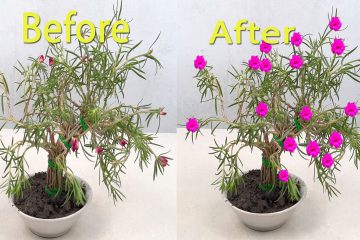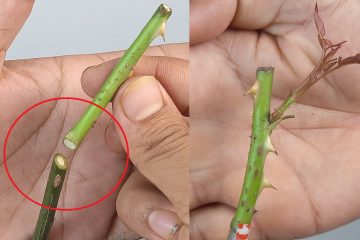Method 1: Propagating ZZ Leaves in Soil (Most Common and Recommended)
This method often yields more reliable results in the long run.
- Select Healthy Leaves: Choose healthy, firm leaves from your ZZ plant. It’s often recommended to take a few, as the success rate can vary for individual leaves. When you cut the leaf, try to get a small piece of the petiole (the tiny stem that connects the leaf to the main stalk) with it.
- Prepare the Cuttings: You don’t necessarily need to let ZZ leaf cuttings callous over like some other succulents, but some people find it beneficial for a few hours.
- Prepare the Potting Mix: Use a well-draining potting mix. A good blend is half potting soil and half perlite or a succulent/cactus mix. This prevents waterlogging, which can lead to rot.
- Plant the Leaves:
- Fill a shallow pot or tray with your prepared potting mix.
- Insert the base of each leaf into the soil, burying about 1/2 to 3/4 inches deep. Make sure the leaf is stable and not wobbly. You can plant multiple leaves in the same pot, giving them a little space.
- Watering:
- Water the soil thoroughly after planting, ensuring it’s evenly moist but not soaking wet.
- After the initial watering, allow the soil to dry out completely before watering again. ZZ plants are drought-tolerant, and overwatering is a common cause of failure in propagation.
- Light and Temperature: Place the pot in a warm location that receives bright, indirect light. A windowsill with indirect light is ideal. A heating mat can significantly speed up the rooting process.
- Patience is Key! This is the most crucial step. It can take 3 to 4 months or even longer for small rhizomes and roots to form at the base of the leaves. Don’t be discouraged if you don’t see immediate top growth. You might even see the original leaf shriveling a bit, which is normal as it’s putting its energy into forming the rhizome.
- New Growth: Eventually, you will see a small shoot emerging from the soil. This is your new ZZ plant! Continue to care for it as you would a mature ZZ plant.
Method 2: Propagating ZZ Leaves in Water (Can be visually satisfying, but sometimes has a lower success rate for transplanting)
- Select Healthy Leaves: Same as for soil propagation, choose healthy leaves, preferably with a bit of the petiole.
- Prepare the Cuttings: No callousing is strictly necessary.
- Place in Water: Fill a small glass or container with about half an inch of water. Place the leaf cuttings in the water, ensuring the base of the leaf (where it was cut from the stem) is submerged.
- Light and Water Changes: Place the container in a spot with bright, indirect light. Change the water every week or so, and clean the container to prevent bacterial growth.
- Rooting and Rhizome Formation: You’ll typically see roots forming within 2-4 weeks. After roots, a small rhizome will begin to develop.
- Transferring to Soil: Once the roots and rhizome are at least one inch long (usually around 3-4 months), it’s time to transfer them to soil. This is where some people experience issues. Roots formed in water are different from soil-formed roots and can sometimes struggle to adapt.
- Fill a small pot with well-draining potting mix.
- Carefully plant the rooted leaf, burying the rhizome and roots.
- Water thoroughly.
- Gradually acclimate the plant to drier soil by slowly reducing watering frequency.
Important Tips for Success:
- Sterilize your tools: Always use clean, sharp scissors or pruning shears to prevent introducing diseases.
- Don’t overwater: This is the golden rule for ZZ plants, especially during propagation. They are highly susceptible to rot.
- Patience is paramount: ZZ plant propagation is a slow process. Don’t constantly dig up your leaves to check for roots. Just keep the conditions consistent and wait.
- Multiple cuttings: Starting with several leaves increases your chances of success.
- Warmth: Warmer temperatures encourage faster rooting.
- Bright, indirect light: Avoid direct sunlight, which can scorch the leaves.
While it takes time, the reward of seeing a new ZZ plant emerge from a single leaf is truly a testament to the plant’s incredible resilience!






















